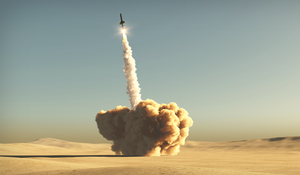The Real and Present Risk of Low-Yield Nuclear Weapons on the Battlefield

Speaker(s): Lowther, A. (Director, Department of Multi-Domain Operations, Army Management Staff College)
Date: 12 January 2022
Speaker Session Summary
SMA hosted a panel discussion with Dr. Adam Lowther (Director, Department of Multi-Domain Operations, Army Management Staff College) as part of its SMA STRATCOM Speaker Series.
Russia’s and China’s status as near-peer nuclear competitors with the US is changing the reality of what a military conflict would look like. Dr. Lowther commented that the threat of being in a military competition with other nuclear capable countries poses new threats to US forces and their allies. It also forces US leadership to examine if their armed forces are ready to use and counter nuclear weapons, especially low-yield nuclear weapons. Dr. Lowther then discussed the effects of low-yield nuclear weapons, how Russia and China would likely use these weapons, and the potential solutions and responses by US and Western forces. He mentioned two theoretical scenarios: a) a Russian invasion of Baltic States and b) a Chinese invasion of Taiwan. These scenarios demonstrated how Russia and China could potentially use nuclear weapons in ways that they believed would not incur an all-out nuclear conflict.
In both scenarios, Russia and China detonate a 10-kiloton nuclear weapon ahead of US or Western forces as a deterrent. Both nuclear strikes would occur in territory that Russia and China consider their own. This was done partially to avoid a nuclear counterstrike. Russia and China would theoretically detonate the weapon 600ft off the ground. An elevation of 600ft would allow US and NATO soldiers to see the blast but avoid serious injuries from about a mile away. This distance also allows Russia and China to contain radiation, thermal fluence, and overpressure from the detonation—all of which fall off sharply as the distance from the detonation site increases. Dr. Lowther commented that for the US to prepare for or dissuade a Russian or Chinese nuclear strike, the US should convince NATO to declare Russia as an adversary, improve Defense Communications Agency mission operational readiness to 24 hours, use weapons that fit the specific operation, and potentially turn a blind eye to Taiwan. Dr. Lowther emphasized that while these are potential options, they are not the best or easiest political or moral decisions, especially turning a blind eye to a Chinese invasion of Taiwan.
Speaker Session Recording
Note: We are aware that many government IT providers have blocked access to YouTube from government machines during the pandemic in response to bandwidth limitations. We recommend viewing the recording on YouTube from a non-government computer or listening to the audio file (below), if you are in this position.
Comments